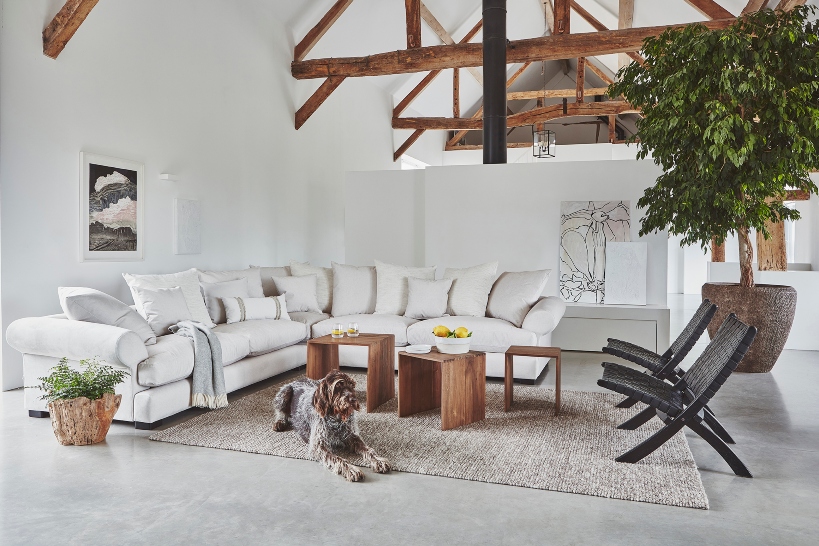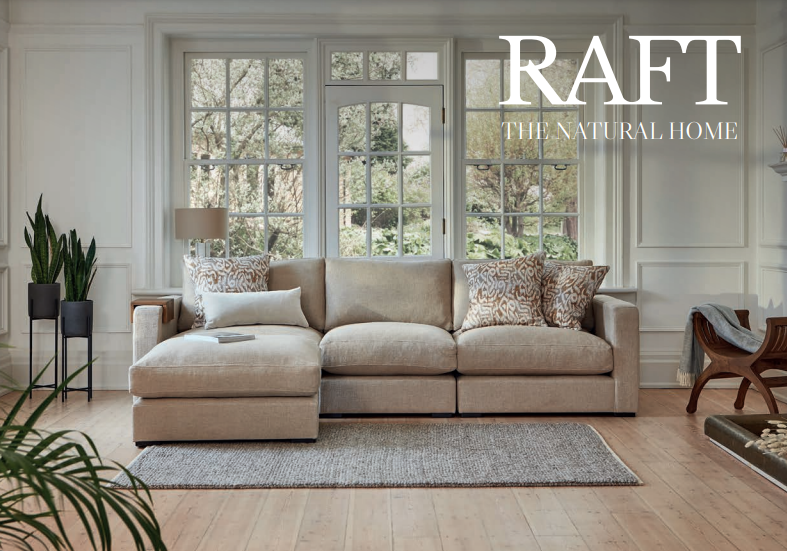Why are Sofas so Expensive? Unpacking Fast Furniture

Fast food, fast fashion and now fast furniture. But what is it? Take a little look inside the industry with us to figure out whether that £500 sofa you've had your eye on is really as great value as it initially seemed. From sofa manufacturing secrets to the retailer language to look out for, this is what you need to know if you want to know what makes a sofa good value for money. With this knowledge, next time you step into a sofa showroom, you will be equipped with what to ask to get to the bottom of the quality question.
Why are sofas so expensive?
Let's be honest, a sofa can be a daunting expense. Whether you're replacing an old one or starting afresh in a new home, being faced with the prospect of spending upwards of £2000 on a sofa can be overwhelming. At this point, it can be tempting to consider an affordable fast furniture alternative. However, understanding where the price tag comes from can put things into perspective and stop you from falling into the trap of "buy cheap, buy twice".
In a nutshell, it's all about where and how the materials are sourced, how the sofa is made, where it was made and who made it. Add to this a fair wage for the skilled sofa artisans and you will have your price tag. Our advice? Don't spend your money on a sofa until you have verified these factors. A cheap sofa should send alarm bells but that doesn't always mean that more expensive sofas are ethical.
How much should you spend on a sofa?

How much you spend on a sofa will vary depending on how big it is and the kind of fabric or leather you choose. However, there is a general rule of thumb we recommend following when trying to work out how much is a reasonable investment. To break it down in numerical terms, we asked Raft's founder, Mick Quinn. Mick has been in the sofa manufacturing and retail business for 25 years. Splitting his time between Raft's sofa factory and the four showrooms in and around London, he knows the end to end process like the back of his hand. This is his advice on how much you should spend on a sofa:
"Most people haven't got enough money to buy a cheap sofa because they simply don't last and you have to rebuy! As they say - buy cheap, buy twice. To get an idea of the cost, let's use a four seater sofa as an example. If a four seater sofa lasts you fifteen years, you should expect to spend £150 a year on it as this is where you'll spend 25% of that time sitting.
One thing to note: don't take a 10 year guarantee on a product from a company that went under last year and has only been trading again for six months. Do your research to make sure you won't be disappointed and lose your money in the long run."
With this in mind, you might be thinking... how bad could a fast furniture sofa be? So, let's unpack it together.
What does fast furniture mean?
Starting at the root of the term, the lead time attached to a sofa will give you a pretty good idea of whether it qualifies as "fast furniture". Fast furniture is the term used to describe furniture that is mass-produced from cheap materials to provide tempting price-tags and rapid lead times.
However, while a quick turnover may feel like a godsend when you've left sofa shopping to the last minute, you need to consider the long term investment that a sofa represents. A company that promises to get every customer's sofa to them in less than a week is cutting corners somewhere. So, where?
Where is fast furniture cutting corners?
Fast furniture can be ordered by the click of a button and be in your home in under a week - sometimes the very next day! However, if you think it sounds too good to be true, you might be right.
Unfortunately, like fast fashion retailers, a short waiting time and small price tag do not promise good value for money. In fact, a peak behind the scenes and the price tag may shock you for the opposite reason. Essentially, if you are not paying much, it didn't cost much to make.
Regarding the lead time, if it can be in your living room by tomorrow, it is most likely ready-made and mass-produced. Mass-produced sofas are outsourced and shipped over to pile up in a warehouse. So, mass-produced from cheap plastics, shortcut staples and fabrics with unverifiable sources, the expense is hard to identify.

What is cheap sofa manufacturing?
Sadly, cheap sofas mean cheap sofa manufacturing. However, what is it and can you really tell the difference? The two crucial factors to consider when justifying the price of a sofa are the artisanship and the materials.
The Structure
Cheap sofa manufacturing starts with the structure. If the structure is lazy, your sofa will not last. At the core of the structure is the material. For a good value sofa, the frame will be handmade using heavy, thick boards of ethically sourced hardwood. If you can lift your sofa up with one hand, it is not built to last. If there is any MDF or softwood in your sofa frame, the saving the retailer has made is considerable.
Next, consider how the frame is built. If a sofa can be flat-packed and assembled by you without any tools, it goes without saying that it will fall apart just as easily. The ugly truth: flat-packed sofas are marketed to move from place to place but they end up in landfill in between moves.
A professional sofa engineer should be responsible for the building of your sofa frame. Without this, it will start to squeak, weaken and come apart after a few years. At this point, the initial saving will feel like anything but.
The Workforce
It's a sad reality that people still have to pay the price for the luxuries we have in our homes. At Raft, we are so vehemently against this concept and refuse to turn a blind eye to the realities of unethical outsourcing. Raft sofas are handmade in-house, in North London.

If your sofa retailer does not make their sofas in-house or makes vague claims of "most" or "some" of their sofas being made in England, trace the source. If you can, often you will discover cheaper manufacturing or a provenance where the ethics of the manufacturing cannot be verified.
With this in mind, consider the following questions when justifying the price of your sofa:
- Has your sofa has been handmade locally by skilled artisans who have been paid fairly for their expertise?
- Is your sofa made from high quality, sustainable materials that the retailer would be proud to see deconstructed?
How to know if a sofa is good value for money?
Shopping for a sofa can be a minefield so you need a professional to break it down for you.
"It's all about how long it will last in proportion to the money you spend on it. So, think structure. Test its strength in the showroom by doing the following things:
- Try to lift it off the floor with one arm. If it's easy, it's not been properly engineered.
- Test if the arm is load bearing. So, take your knee, place it on the arm and distribute all your weight onto it. If you feel any give, you're in trouble. If the person working there doesn't want you to, you've got your answer!
When it comes to sofas with wide arms, a good value for money option will be heavy. However, most retailers opt for light MDF to give the look of a square arm without committing to building a strong square structure. By comparison, Raft's arms are made from a 25ml hardwood board. Pay attention when a company can't guarantee 100% hardwood... you'll be able to feel it."
What about sofa guarantees?
If you're concerned by the feel of the sofa but reassured by the guarantee the company offers, Mick encourages you to do you research into the history of the company.
"How long has the company been going? if they're giving you a ten year guarantee but they've been around for less time or have gone bust in the last few years and relaunched, think about what that guarantee means."


















